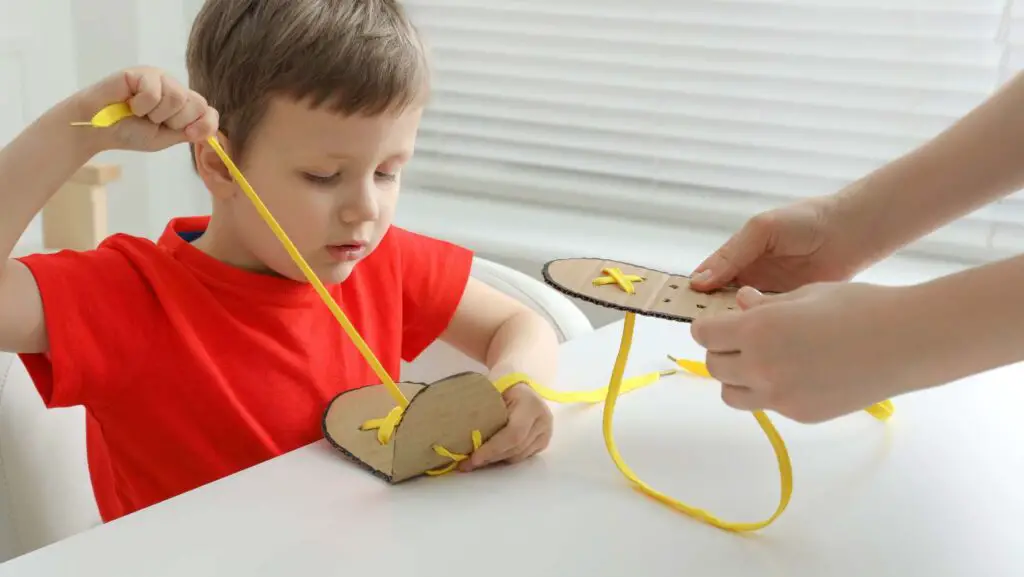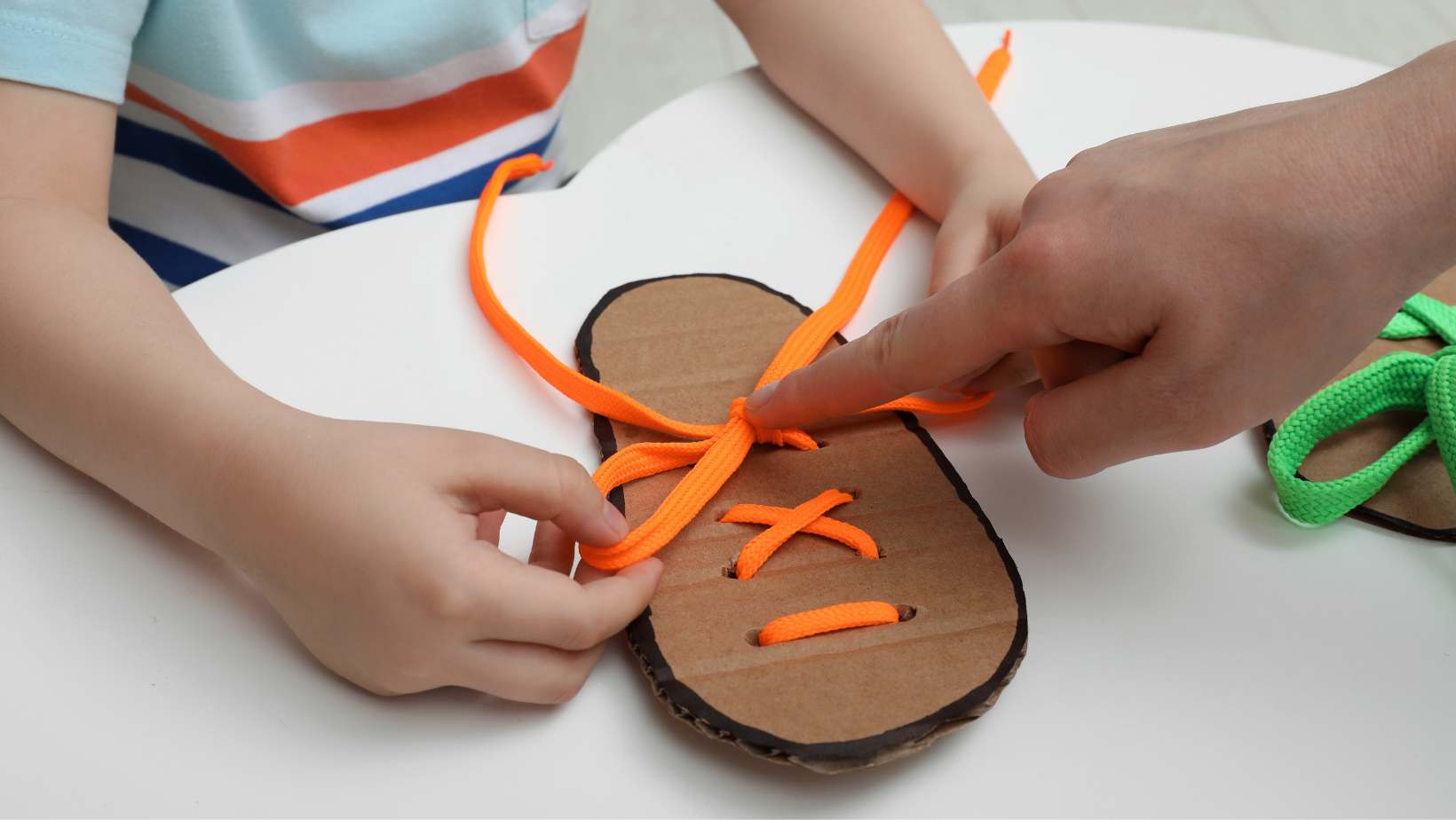Teaching your child to tie their shoes is an essential milestone in their development. Not only does it provide them with practical life skills, but it also boosts their confidence and independence. In this article, we will explore effective methods to teach your child how to tie their shoes, ensuring they master this essential skill with ease.
Contents
- 1 The importance of teaching shoe-tying skills
- 2 Choosing the right time to start teaching
- 3 Preparing for the shoe-tying lesson
- 4 A step-by-step guide to teaching shoe-tying
- 5 Utilizing visual aids and resources
- 6 Making it fun and engaging
- 7 Common challenges and solutions
- 8 Celebrating achievements and milestones
- 9 Conclusion
- 10 FAQs
The importance of teaching shoe-tying skills
Learning to tie shoes is a fundamental skill that children need as they grow older. It empowers them to be self-sufficient and prepares them for activities requiring proper shoe fastening, such as participating in sports or attending formal events. Teaching your child to tie their shoes fosters autonomy and prepares them for success.
Choosing the right time to start teaching
The ideal time to start teaching your child to tie their shoes is typically around five or six. However, every child is different, so it’s important to consider their readiness and motor skills. Look for signs of interest and the ability to handle small objects. If your child shows curiosity about shoe-tying or displays improved fine motor skills, it may indicate that they are ready to learn.
Preparing for the shoe-tying lesson
Before you begin the shoe-tying lesson, gather the necessary materials. You will need shoes with laces, preferably ones that are easy to manipulate. Ensure a comfortable and distraction-free environment, allowing your child to focus on the task. Patience is critical during this process, as learning to tie shoes can be challenging for young children.

A step-by-step guide to teaching shoe-tying
Understanding the shoelace and its parts
Start by introducing your child to the different parts of a shoelace. Show them the aglet (the plastic or metal tip), the lace itself, and the ends that thread through the shoe’s eyelets.
The bunny ears technique
Teach your child the “bunny ears” technique, simplifying tying shoes. Show them how to cross the shoelaces over each other and form two loops resembling bunny ears. Demonstrate how to tightly cross and pull the loops to create a secure knot.
Practice with large-sized shoelaces
To make it easier for your child to grasp the concept, provide them with large-sized shoelaces. These are typically easier to manipulate and allow for better coordination. Encourage your child to practice making bunny ears and tying knots using the large shoelaces until they feel comfortable with the motions.
Gradually transitioning to smaller shoelaces
Once your child has gained confidence with the larger shoelaces, gradually introduce smaller-sized ones. This will help them adapt to different shoe types and lace sizes. Reinforce the bunny ears technique and guide them through the process until they can tie smaller shoelaces independently.
Encouraging persistence and practice
Learning to tie shoes requires practice and persistence. Encourage your child to practice regularly, even if they struggle at first. Offer encouragement, praise their efforts, and celebrate their progress. They will become more proficient in tying their shoes with time and practice.
Utilizing visual aids and resources
To enhance the learning experience, consider utilizing visual aids and resources. Various children’s books, videos, and online tutorials provide step-by-step instructions on shoe tying. These resources can engage your child and make the learning process more enjoyable.
Making it fun and engaging
Make the shoe-tying process fun and engaging for your child. Incorporate games, songs, or challenges that motivate them to practice. For example, you can create a “shoe-tying race” where you time their efforts or reward them with small incentives for achieving milestones. By infusing fun into the learning experience, your child will be more eager to participate.
Common challenges and solutions
During the shoe-tying journey, you may encounter common challenges. Some children may struggle with dexterity or get easily frustrated. If your child finds it challenging, break down the steps into smaller tasks and provide extra guidance. Consider using brightly colored shoelaces or markers to highlight specific steps. Additionally, offering verbal cues and positive reinforcement can boost their confidence and motivation.
Celebrating achievements and milestones
Celebrate their achievements and milestones as your child progresses in their shoe-tying skills. Recognize their efforts and reinforce their sense of accomplishment. This positive reinforcement will inspire them to continue practicing and refining their shoe-tying abilities.
Conclusion
Teaching your child to tie their shoes is a valuable life skill that promotes independence and confidence. By following a step-by-step approach, using visual aids, and infusing fun into the learning process, you can help your child master shoe-tying with ease. Remember to be patient, encourage regular practice, and celebrate their successes.
FAQs
1. What age should I start teaching my child to tie their shoes? It is generally recommended to start teaching shoe-tying skills around five or six. However, every child is unique, so it’s essential to consider their readiness and motor skills.
2. Are there any alternative methods for teaching shoe-tying? Yes, there are alternative methods, such as using Velcro shoes or elastic shoelaces initially. These options can provide a transition phase before introducing traditional shoelaces.
3. How long does a child learn to tie their shoes take? The time it takes for a child to learn to tie their shoes can vary. It depends on their individual progress, practice frequency, and coordination skills. Some children may learn within a few weeks, while others may take a few months.
4. What if my child gets frustrated or loses interest during the process? If your child gets frustrated or loses interest, take a break and revisit the lesson later. Keep the sessions short and engaging. Incorporating fun elements and using positive reinforcement can help maintain their enthusiasm.
5. Should I teach my child a specific shoe-tying method? The bunny ears technique explained in this article is a commonly used method. However, you can teach your child any method they find comfortable and can perform independently.
In conclusion, teaching your child to tie their shoes is a rewarding experience that fosters their independence and self-confidence. Following the outlined steps and incorporating fun and engaging strategies can ensure a successful shoe-tying journey for your child. Embrace the process, celebrate their achievements, and watch as they proudly conquer the art of tying their shoes.

I am an accomplished footwear blogger with a keen eye for style and a passion for shoes. My deep-rooted love affair with footwear began at a young age when I would spend hours perusing shoe stores, admiring the intricate designs and imagining the stories they could tell.

